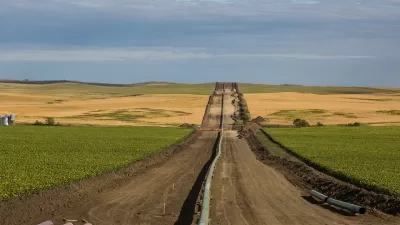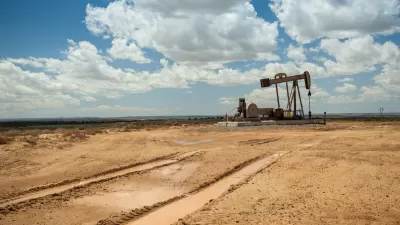Safety is one trigger in the heated debate over whether fossil fuels should be transported by pipeline. While the industry insists the method is safer than others, the spread of accidents since 1986 is substantial.
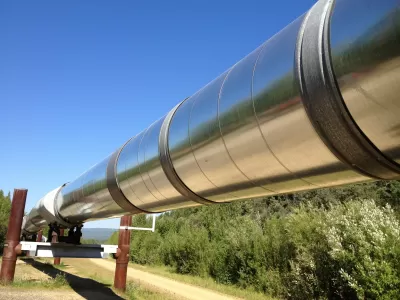
[Updated Dec. 9, 2016]
In the wake of the protests at Standing Rock, oil and gas pipelines remain as fraught an issue as ever. George Joseph writes, "Oil industry supporters argue that pipelines are safer alternative to hauling fuel by tanker trucks or freight trains. [...] Environmentalists, however, point to a lack of adequate state and federal regulation and the difficulties of maintaining millions of miles of aging pipeline infrastructure."
The statistics bear some of those worries out. "Over the last twenty years, more than 9,000* significant pipeline-related incidents have taken place nationwide, according to data from the Pipeline and Hazardous Materials Safety Administration. The accidents have resulted in 548 deaths, 2,576 injuries, and over $8.5 billion in financial damages."
[*Editor's note: A representative at the Pipeline and Hazardous Materials Administration (PHMA) of the U.S. Department of Transportation contacted Planetizen to point out that the reported 20-year total of significant pipeline incidents is 5,675. Incidents deemed significant have resulted in 347 fatalities, 1,346 injuries, and $7.5 billion in costs. All data for pipeline incidents, significant and otherwise, are available online.]
Using federal data compiled by environmental advocate Richard Stover, CityLab mapped out all major pipeline accidents occurring from 1986 through 2016. "Significant pipeline-related incidents have picked up in recent years in certain states. In Texas, for example, the effects of the state's drilling boom may be seen in its increased accident rate: since 2009 the state has had 497 incidents, over a hundred more than in the seven years before."
FULL STORY: 30 Years of Oil and Gas Pipeline Accidents, Mapped
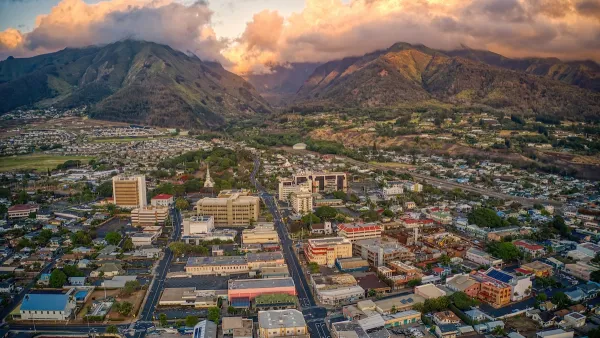
Maui's Vacation Rental Debate Turns Ugly
Verbal attacks, misinformation campaigns and fistfights plague a high-stakes debate to convert thousands of vacation rentals into long-term housing.

Planetizen Federal Action Tracker
A weekly monitor of how Trump’s orders and actions are impacting planners and planning in America.
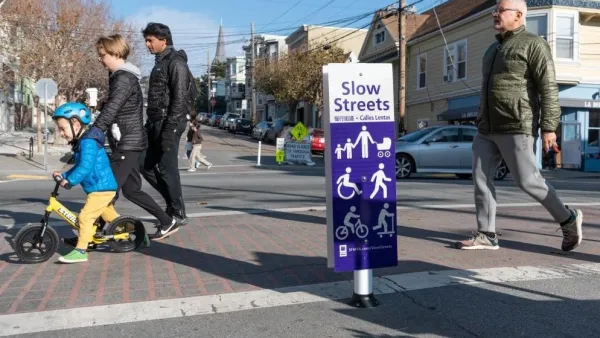
San Francisco Suspends Traffic Calming Amidst Record Deaths
Citing “a challenging fiscal landscape,” the city will cease the program on the heels of 42 traffic deaths, including 24 pedestrians.

Defunct Pittsburgh Power Plant to Become Residential Tower
A decommissioned steam heat plant will be redeveloped into almost 100 affordable housing units.

Trump Prompts Restructuring of Transportation Research Board in “Unprecedented Overreach”
The TRB has eliminated more than half of its committees including those focused on climate, equity, and cities.

Amtrak Rolls Out New Orleans to Alabama “Mardi Gras” Train
The new service will operate morning and evening departures between Mobile and New Orleans.
Urban Design for Planners 1: Software Tools
This six-course series explores essential urban design concepts using open source software and equips planners with the tools they need to participate fully in the urban design process.
Planning for Universal Design
Learn the tools for implementing Universal Design in planning regulations.
Heyer Gruel & Associates PA
JM Goldson LLC
Custer County Colorado
City of Camden Redevelopment Agency
City of Astoria
Transportation Research & Education Center (TREC) at Portland State University
Jefferson Parish Government
Camden Redevelopment Agency
City of Claremont


























